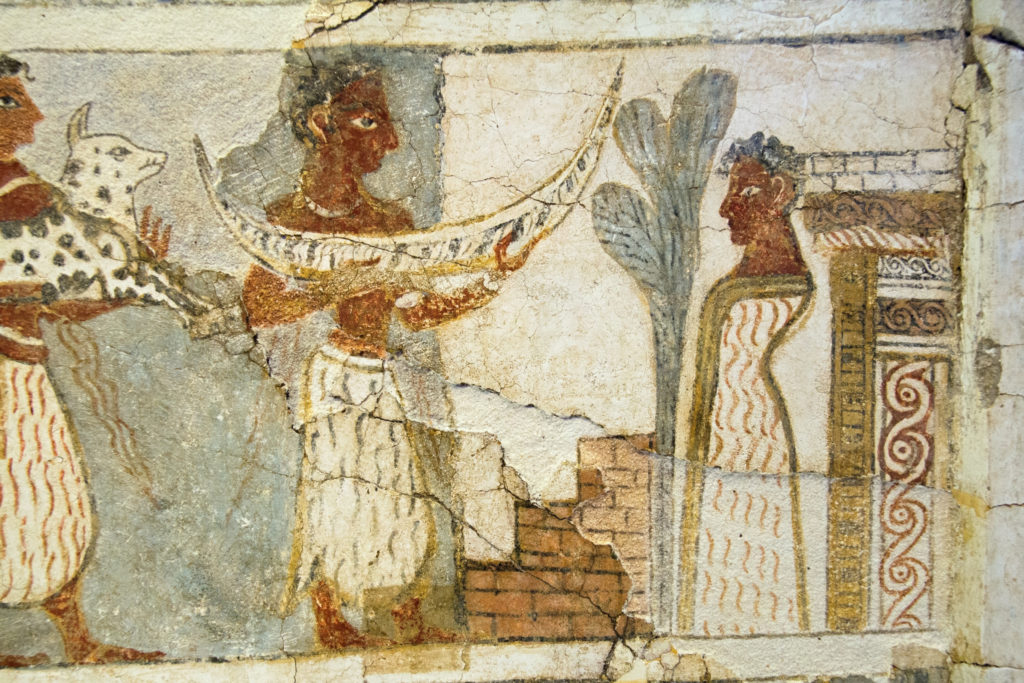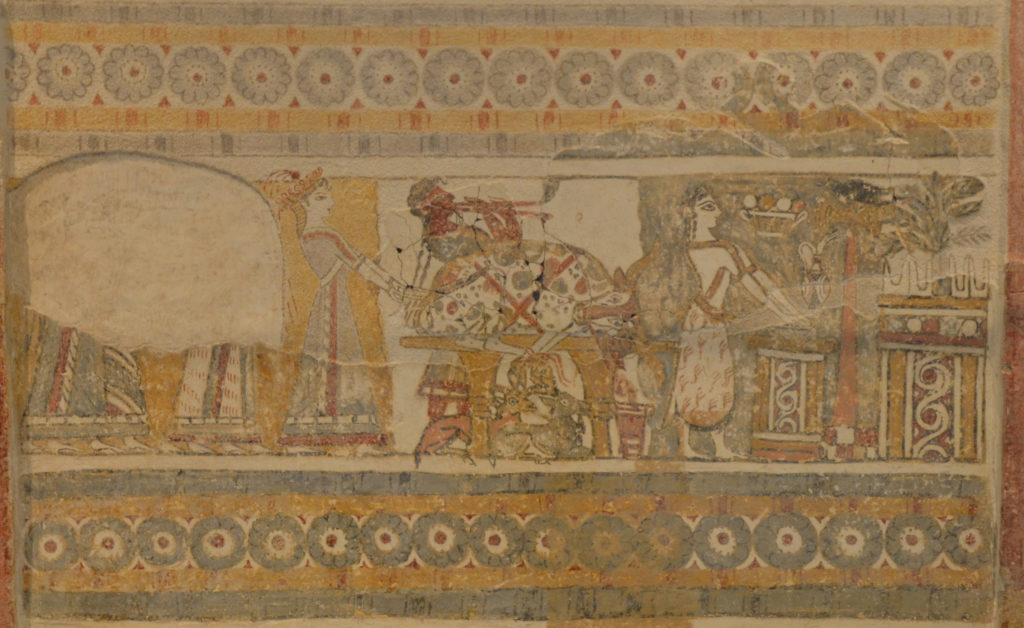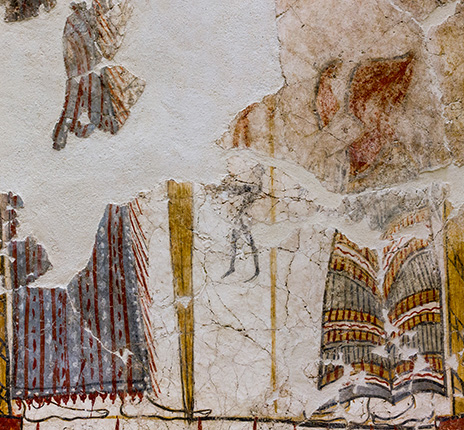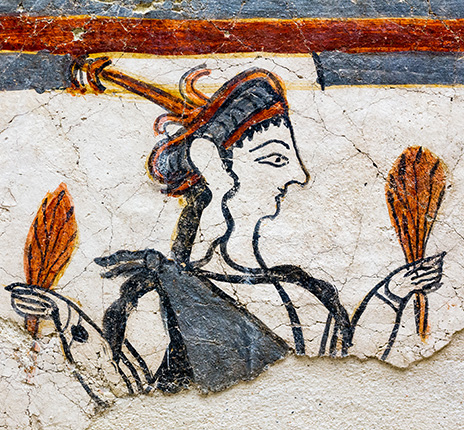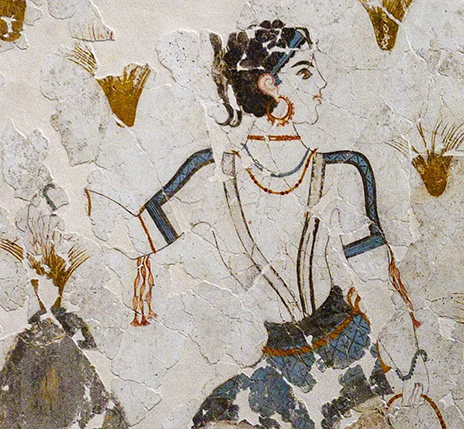
The Hagia Triada Sarcophagus
Find spot: Crete, Hagia Triada, Necropolis, Tomb 4
Date: 1370-1320 BCE
Clothing depicted: Heanos with jacket and no overskirt; the priestesses wear a jacket and shaggy skirt, but the heanos hem is not visible, so it’s unclear whether they wear a heanos. The men wear shaggy skirts.

The panel above contains two figures whose sex or gender puzzles me. The first is the third figure from the left, a person in a yellow heanos who carries what appears to be a lyre. Minoans generally show adult women with pale skin and long hair, but this person has dark skin and short hair. Men are generally shown wearing kilts or shaggy skirts, but no upper garments, but this person is wearing a woman’s heanos. Is this a woman of a darker-skinned race? Is her hair short because she’s barely post-pubescent and has just started growing out her hair? Is this a a young man who’s taking a female role in the ceremony? Is this a rare example of someone who straddles the sexes?
The other puzzling figure is the idol at the far right. It has a male’s short hair and dark skin, but it wears a full-length garment made from the same material as the shaggy skirts. I’m inclined to interpret this as a male deity in a ceremonial garment, but I’m open to interpretations.


